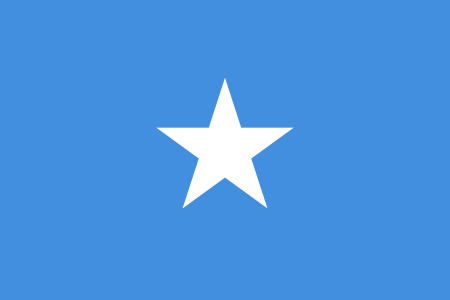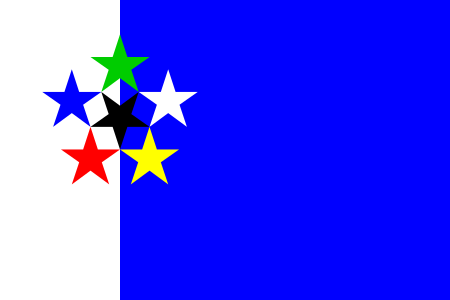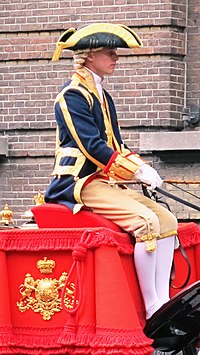Breeches
|
Read other articles:

У этого термина существуют и другие значения, см. Горностай (значения). Горностай Научная классификация Домен:ЭукариотыЦарство:ЖивотныеПодцарство:ЭуметазоиБез ранга:Двусторонне-симметричныеБез ранга:ВторичноротыеТип:ХордовыеПодтип:ПозвоночныеИнфратип:Челюстноротые�…

Elezioni parlamentari in Ucraina del 1994 Stato Ucraina Data 27 marzo (primo turno), 2-10 aprile (secondo turno) Assemblea Verchovna Rada Liste KPU NRU SPU Voti 3.683.33212,72%% 1.491.1645,15% 895.8303,09% Seggi 86 / 450 20 / 450 14 / 450 Distribuzione dei seggi per regione 1990 1998 Le elezioni parlamentari in Ucraina del 1994 si tennero il 27 marzo (primo turno) e il 2 e 10 aprile (secondo turno). Le elezioni furono indette in seguito ad un accordo fra il Presidente e il Parlamento: il 2…

South Korean professional golfer Jang Ha-naPersonal informationBorn (1992-05-02) 2 May 1992 (age 32)Seoul, South KoreaHeight5 ft 5 in (165 cm)Sporting nationality South KoreaResidenceSan Diego, CaliforniaCareerTurned professional2010Current tour(s)LPGA of Korea TourFormer tour(s)LPGA TourProfessional wins19Number of wins by tourLPGA Tour5LPGA of Korea Tour15Best results in LPGA major championshipsChevron ChampionshipT21: 2017Women's PGA C'shipT30: 2016U.S. Women's OpenT2…

بيدوا الإحداثيات 3°07′00″N 43°39′00″E / 3.1166666666667°N 43.65°E / 3.1166666666667; 43.65 تقسيم إداري البلد الصومال[1] التقسيم الأعلى باي عاصمة لـ جنوب غرب الصومال خصائص جغرافية ارتفاع 446 متر معلومات أخرى منطقة زمنية توقيت شرق إفريقيا رمز جيونيمز 64536 تع…

رقائق الحقائق في حساب الدرج والدقائق الصفحة الثانية من مخطوطة الكتاب محفوظة في مكتبة الكونغرس بواشنطن معلومات الكتاب المؤلف سبط المارديني(1366 - 1447) اللغة اللغة العربية النوع الأدبي علم الفلك والرياضيات ويكي مصدر رقائق الحقائق في حساب الدرج والدقائق - ويكي مصدر مؤلفا…

馬里奧·蘇亞雷斯Mário Alberto Nobre Lopes Soares第17任葡萄牙總統任期1986年3月9日—1996年3月9日总理阿尼巴爾·卡瓦科·席爾瓦前任安東尼奧·拉馬爾霍·埃亞內斯继任沈拜奧第114任葡萄牙總理任期1983年6月9日—1985年11月6日前任鮑仕民继任阿尼巴爾·卡瓦科·席爾瓦第107任葡萄牙總理任期1976年7月23日—1978年8月28日前任魏祖承继任阿爾弗雷多·諾布雷·達科斯塔 个人资料出生(1924-12-07)1924�…

جزيرة سان بول تاريخ الاكتشاف 1559 معلومات جغرافية الموقع المحيط الهندي الإحداثيات 38°43′48″S 77°31′20″E / 38.73°S 77.522222222222°E / -38.73; 77.522222222222 [1] [2] المسطح المائي المحيط الهندي المساحة 8.4 كيلومتر مربع الطول 5.0 كيلومتر العرض 2.5 كيلومتر أعلى ا…

Ultranationalist paramilitary group in Japan For the fictional version, see Black Dragon Society (comics). Black Dragon SocietyPredecessorGen'yōshaFormation1901; 123 years ago (1901)FounderUchida RyoheiFounded atJapanTypePoliticalLocationEthiopia, Turkey, Morocco, throughout Southeast Asia, South America, Europe, and the United States.FieldsPolitics Part of a series onConservatism in Japan Ideologies Capitalist Fiscal State Corporate Nationalist Minzoku Populist Shōwa S…

Kingdom of Prussia's highest order of merit For the film, see Pour le Mérite (film). AwardPour le Mérite(Military class)TypeNeck decorationPresented byKing of Prussia (1740–1918)EligibilityMilitary personnel (1740–1918)StatusExtinctEstablished between 7 June and 15 June 1740[1] 1810 (pure military class) First awarded16 June 1740[1]Last awarded22 September 1918Total5415[2]Pour le Mérite Pour le Mérite with oak leavesRibbon bars of the order PrecedenceNext (lo…

SMA Negeri 4 BandungInformasiDidirikan1956AkreditasiA[1]Nomor Statistik Sekolah301026004018Kepala SekolahTeti Ismayati, S.Pd.,M.PKim.Jumlah kelas10-11 kelas setiap tingkatJurusan atau peminatanIPA dan IPSRentang kelasX IPA, X IPS, XI IPA, XI IPS, XII IPA, XII IPSKurikulumKurikulum 2013Jumlah siswa±910 siswa (rata-rata 34 siswa tiap kelas)StatusNegeri Kluster 1NEM terendah334,5 (Dalam Wilayah 2015) 354,00 (Luar Wilayah 2015)NEM tertinggi385,00 (2015)Nilai masuk rata-rat…

Ratapan 3Ratapan 1:1 - 1:11 pada halaman pertama Kitab Ratapan dalam Codex Sinaiticus (330-350 M).KitabKitab RatapanKategoriKetuvimBagian Alkitab KristenPerjanjian LamaUrutan dalamKitab Kristen25← pasal 2 pasal 4 → Ratapan 3 (disingkat Rat 3) adalah bagian ketiga dari Kitab Ratapan dalam Alkitab Ibrani dan Perjanjian Lama di Alkitab Kristen. Digubah oleh nabi Yeremia bin Hilkia, pada waktu dimulainya kepergian orang Yehuda dalam Pembuangan ke Babel pada zaman raja Zedekia dari Keraja…

Buddhism, Mindfulness and Psychology This article may contain an excessive amount of intricate detail that may interest only a particular audience. Please help by spinning off or relocating any relevant information, and removing excessive detail that may be against Wikipedia's inclusion policy. (July 2016) (Learn how and when to remove this message) This article contains too many or overly lengthy quotations. Please help summarize the quotations. Consider transferring direct quotations to Wikiqu…

Internet-based vexillological association and resource This article has multiple issues. Please help improve it or discuss these issues on the talk page. (Learn how and when to remove these template messages) This article relies excessively on references to primary sources. Please improve this article by adding secondary or tertiary sources. Find sources: Flags of the World website – news · newspapers · books · scholar · JSTOR (May 2021) (Learn how a…

How to Talk to Girls at Parties Título Cómo enamorar a una chica punkFicha técnicaDirección John Cameron MitchellProducción Iain Canning Howard Gertler John Cameron Mitchell Emile ShermanGuion Philippa GoslettJohn Cameron MitchellBasada en How to Talk to Girls at Parties de Neil GaimanMúsica Nico MuhlyJamie StewartFotografía Frank G. DeMarcoMontaje Brian A. KatesProtagonistas Elle FanningAlex SharpNicole KidmanRuth WilsonMatt LucasJoanna ScanlanStephen Campbell MooreJoey AnsahElarica Gall…

Concept of uniformity or non-uniformity in an object's composition or attributes For other uses, see Homogeneity (disambiguation) and Heterogeneity (disambiguation). Homogeneity and heterogeneity;only 'b' is homogeneous Homogeneity and heterogeneity are concepts relating to the uniformity of a substance, process or image. A homogeneous feature is uniform in composition or character (i.e. color, shape, size, weight, height, distribution, texture, language, income, disease, temperature, radioactiv…

Песнь о Роланде. Рукопись XIV векаChanson de geste (букв. «песнь о деяниях»), или жеста — жанр французской средневековой литературы эпического содержания. Самая известная жеста — «Песнь о Роланде». Содержание 1 Термин 2 Содержание 3 Авторство 4 Строение 5 Происхождение 5.1 Темати…

كريستوفر ويليس معلومات شخصية الميلاد سنة 1978 (العمر 45–46 سنة) نيوكاسل مواطنة المملكة المتحدة الحياة العملية المدرسة الأم كلية كلير المهنة ملحن، وعالم موسيقى اللغات الإنجليزية مجال العمل موسيقى، وأفلمة الموسيقى المواقع IMDB صفحته على IMDB[1 …

Artikel ini memiliki beberapa masalah. Tolong bantu memperbaikinya atau diskusikan masalah-masalah ini di halaman pembicaraannya. (Pelajari bagaimana dan kapan saat yang tepat untuk menghapus templat pesan ini) Artikel ini tidak memiliki bagian pembuka yang sesuai dengan standar Wikipedia. Mohon tulis paragraf pembuka yang informatif sehingga pembaca dapat memahami maksud dari FC Vorskla Poltava. Contoh paragraf pembuka FC Vorskla Poltava adalah .... (November 2011) (Pelajari cara dan kapan saat…

American college football season 2006 Utah Utes footballArmed Forces Bowl championArmed Forces Bowl, W 25–13 vs. TulsaConferenceMountain West ConferenceRecord8–5 (5–3 MW)Head coachKyle Whittingham (2nd season)Offensive coordinatorAndy Ludwig (2nd season)Offensive schemeSpreadDefensive coordinatorGary Andersen (2nd season)Base defense4–3Home stadiumRice-Eccles StadiumSeasons← 20052007 → 2006 Mountain West Conference football standings vt…

1932 novel by Anthony Berkeley Cox Before the Fact First editionAuthorAnthony Berkeley writing as Francis IlesLanguageEnglishGenreCrime novelPublisherGollanczPublication date1932Publication placeEnglandMedia typePrint (hardback & paperback)Preceded byMalice Aforethought Before the Fact (1932) is an English novel by Anthony Berkeley Cox writing under the pen name Francis Iles. It tells the story of a woman marrying a man who is after her inherited money and prepared, it seems,…





